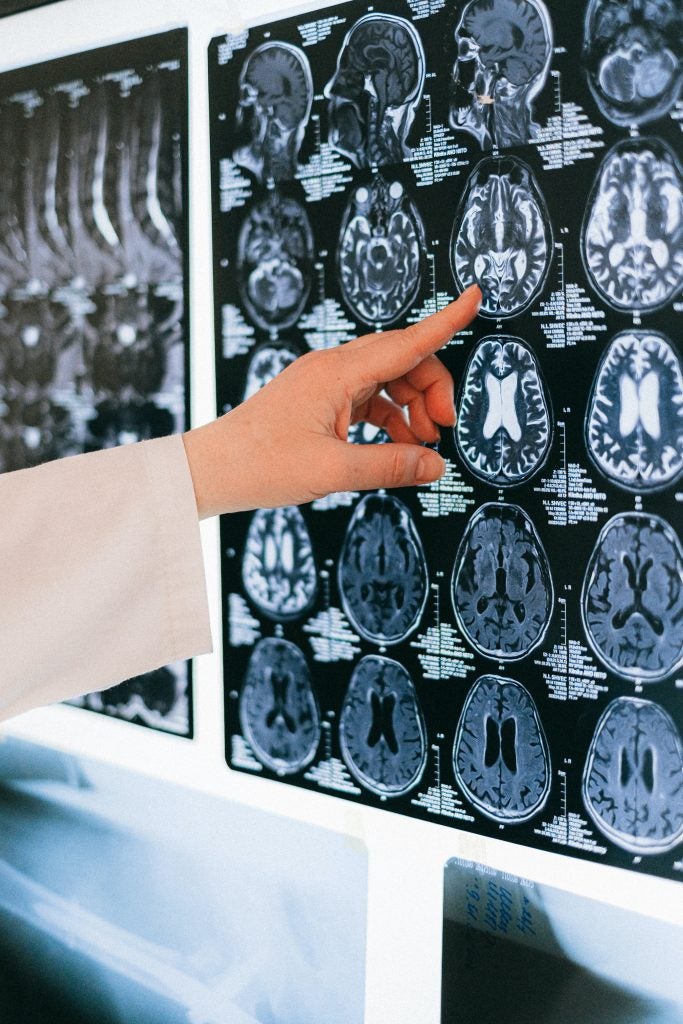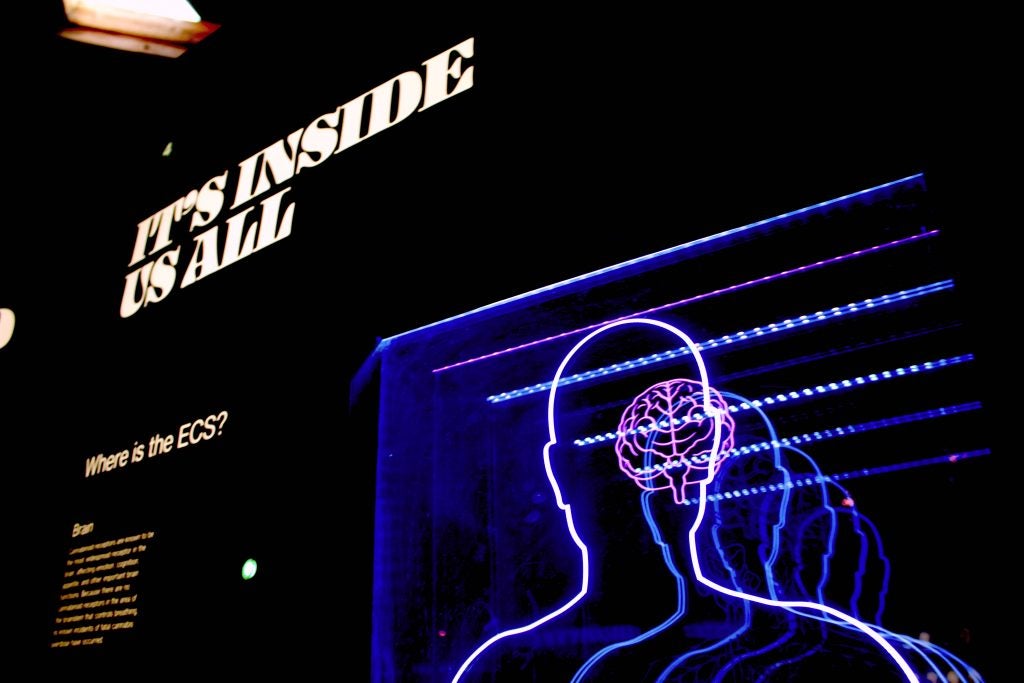
Romantic love is one of the most universal human experiences. More than 20 years ago, biological anthropologist Helen Fisher studied 166 societies and found evidence of romantic love in 147 of them.1 According to Richard Schwartz, associate professor of psychiatry at MacLean Hospital, romantic love must be wired into our basic biological nature due to its cross-cultural prevalence. Romantic love has recently gained popularity throughout the fields of neuroscience, psychology, and psychoneuroendocrinology. Psychoneuroendocrinology is the study of the way hormones affect the brain and, subsequently, human behavior. Hormones are chemical messengers that travel through the bloodstream and cause biological changes in the body that affect everything from emotions to physical development. Hormones can also act as neurotransmitters in the brain. Helen Fisher has studied romantic love extensively and has theorized that human beings have evolved three different brain networks for romantic love.2 This article focuses on the changes that happen to your brain during the three components of romantic love—lust, attraction, and attachment. These systems are often connected but can also operate separately. When a person is in love, the changes to their emotional processing are mostly attributed to hormones coursing through the body and neurotransmitter activity in the brain. Neurotransmitters are chemicals released in the brain that facilitate communication between brain cells. Neurotransmitters also affect a person’s emotional state. Throughout this article, remember that hormones and neurotransmitters do not cause behaviors or emotions, they simply increase the likelihood of a person feeling or behaving in a certain way. For example, high levels of the sex hormone testosterone in females will not cause sexual aggression. In reality, more sexually aggressive behaviors in females are only associated with higher levels of testosterone. It is also important to note that this article does not discuss the ways in which different genders are socialized to behave when falling in love, nor does it address cultural differences surrounding romantic relationships. Please explore our website for more information on love and relationships.
Table of Contents
Lust

Lust is characterized by a craving for sexual gratification. Lust generally drives humans to reproduce with any appropriate partner (it is the other phases of love that motivate us to prefer and pursue specific partners).2 This phase is primarily driven by the sex hormones, estrogen and testosterone.3
Males and females produce both estrogen and testosterone, however, in differing levels. In females, estrogen plays a role in maintaining vaginal health, the longing for physical closeness with a partner, and the desire for sex. Below is the chemical structure of estrogen.
In both males and females, high levels of testosterone drive sexual desire, openness, and seductiveness.3 During the lust phase, a female’s levels of testosterone increase, which may increase sexual aggression. In males, testosterone levels actually decrease, which may increase the likelihood of being receptive to an emotional connection.4,5 Males may be more likely than females to be sexual without commitment due to higher levels of testosterone and it has been shown that baseline levels of testosterone decrease in males during the early stages of falling in love.4 Below is the chemical structure for testosterone, which is very similar to the hormone estrogen.
During the lust phase, the neurotrasnmitter phenylethylamine (PEA) increases. PEA is a natural amphetamine produced by the brain and has been referred to as “the love molecule.”6 An amphetamine is a compound that stimulates the central nervous system. The brain produces natural amphetamines, but they can also be found in nature (e.g. caffeine) or synthesized in a laboratory (e.g. MDMA). PEA promotes the feelings of infatuation during the early phases of love.7 MDMA, also known as “ecstasy” or “Molly,” is similar to PEA. MDMA is an illicit psychoactive drug that tends to increase the user’s feelings of sociability and closeness with others. High-intensity activities such as skydiving, eating large amounts of chocolate, and using certain psychoactive drugs also raise PEA levels.7 Below is the chemical structure of phenylethylamine.
As with all human conditions, different hormones and neurotransmitters interacting at different levels influence extremely complex feelings and behaviors. Sex hormones and PEA work in conjunction with other hormones and neurotransmitters to affect sexual desire.
Romantic Attraction

Romantic attraction is associated with elation, obsessive thinking about a partner, heightened energy, and yearning for a partner.2 During the attraction phase, a person may also experience feelings of euphoria and exhileration.3 These feelings are due to an increase of the neurotransmitters dopamine and norepinephrine \increase in the brain. The chemical structure of norepinephrine is shown on the right. When norepinephrine is present, the brain then releases adrenocorticotropic hormone (ACTH) into the bloodstream. ACTH travels through the blood and triggers the adrenal glands to release the hormone adrenaline into the body.8 The chemical structure of adrenaline is shown on the left. Adrenaline causes the heart to beat faster and stronger, resulting in a surge of energy and focused attention on a partner. It can also cause heightened feelings of anxiety and nervousness. The feeling of “butterflies in your stomach” when seeing or thinking about a partner can be attributed to increases in adrenaline.3 Since hormones associated with the stress response are released during the attraction phase, individuals may also experience other physiological effects of stress such as sleeplessness, loss of appetite, rapid heart rate, or accelerated breathing.3
Dopamine is the neurotransmitter associated with the reward and pleasure centers of the brain and it plays a role in motivation, addiction, attention, and desire.3 Dopamine allows us to see rewards and motivates us to take action towards them. When individuals fall in love, dopamine activates the reward centers of the brain, which helps to make love a pleasurable experience, similar to the euphoric effects associated with cocaine.1 Dopamine circuits in the brain appear to greatly contribute to feelings of engagement and excitement. These feelings occur when seeking necessary resources for survival, such as food and sex, and also when pursuing interests that promote rewarding experiences, such as pursuing a new partner.8 Dopamine is primarily responsible for feelings of elation and excitement during the attraction phase. The chemical structure of dopamine is shown below. It is very similar to the structure of norepinephrine.
The attraction phase is also associated with reduced activity of the neurotransmitter serotonin.1 Serotonin plays a role in maintaining mood balance, appetite, sleep, memory, sexual desire, and sexual function.3 Low levels of serotonin are found in individuals with obsessive-compulsive disorder which suggests that reduction of serotonin during the attraction phase may explain obsessive thinking about a new partner and consistent reflection on romantic times spent with them.3,4,9 Richard Schwartz described the obsessive-compulsive behaviors of infatuation as “intrusive, maddeningly preoccupying thoughts, hopes, and terrors of early love.”1 The chemical structure of serotonin is shown below.
The attraction phase is often considered the “honeymoon phase” between two partners. This phase usually lasts a few months or less before the attraction fades or the attachment phase takes over.
Romantic Attachment
Romantic attachment describes the calm and emotional union a person feels with a long term partner.2 The attachment phase is also characterized by a feeling of security, the desire to protect one another, and a feeling of comfort. Feelings of attachment do not solely exist within romantic relationships but can exist within friendships and familial relationships.3

The attachment phase is associated with an increase in the neurotransmitters oxytocin and vasopressin in the brain. Oxytocin, also called the “love hormone,” is a hormone that also acts as a powerful neurotransmitter in the brain. The body releases oxytocin during physical touch and skin-to-skin contact such as hugging, cuddling, kissing, and other sexual behaviors.1,3 It evokes feelings of calmness, security, and contentment—feelings often associated with pair bonding. Oxytocin activates brain areas associated with pleasure and reward, likely because the body releases dopamine in coordination with oxytocin as the result of physical touch.3 Oxytocin also plays a role in pregnancy, nursing, and mother-infant attachment. The chemical structure of oxytocin is shown below.
Vasopressin, also called antidiuretic hormone, is typically released from the brain into the bloodstream as a hormone to regulate urine production depending on how much water a person consumes. However, there is evidence that vasopressin is released directly into the brain after sexual activity. Vasopressin initiates the desire to stay with that particular person and facilitates strong, emotional attachment. It is also associated with behaviors that produce long-term, monogamous relationships.1,3 The chemical structure of vasopressin, similar to the structure of oxytocin, is shown below.
After about one to two years, the initial stress, angst, and constant craving of romantic love subsides. Stress hormone levels and serotonin levels return to normal and love becomes a buffer against stress.1 Brain areas associated with reward and pleasure are still activated but intense desire often lessens.
Functional Magnetic Resonance Imaging (fMRI)
Functional magnetic resonance imaging (fMRI) measures neuronal activity in different parts of the brain. An fMRI machine takes a picture of the brain and areas appear to “light up” where neurons are active. These lit up areas represent the regions of the brain where there is more oxygenated blood. Active brain areas require more oxygen, so blood will flow to active areas in larger amounts. The image below shows an example of fMRI brain images. The participant in the fMRI machine was shown a series of images depicting faces or houses. The four images on the left represent brain areas that are more active (i.e. receiving more blood flow) in response to images of faces. The four images on the right show brain areas that are more active in response to images of houses.
Functional magnetic resonance imaging revolutionized the field of neuroscience by giving researchers a way to identify which areas of the brain are active during various cognitive tasks with reasonable accuracy. Many fMRI studies have been done to determine parts of the brain that are active when a person is in love. One study performed fMRI scans of the brains of males and females who reported being wildly in love.2 When the participants were shown images of the people they were in love with, the part of the brain that produces dopamine “lit up.” Dopamine is the neurotransmitter associated with feelings of reward and pleasure that increases during the romantic attraction phase. Sex differences were also found.2 Male participants showed more brain activity in areas associated with visual processing. From an evolutionary perspective, males found female mates by visually appraising a female’s ability to produce healthy offspring. Female participants showed more brain activity in regions associated with memory recall. In early human mating, females needed to assess a male’s ability to provide and protect, so it is an evolutionary advantage to remember certain qualities about a potential mate (e.g. keeping commitments made in the past).2
An fMRI study conducted in 2011 also showed that it is possible to be in love after decades of marriage.1 The research team performed fMRI scans on participants who had been married for an average of 21 years. They found the same intensity of activity in dopamine-rich areas of the brains as found in the brains of couples who were newly in love. The study suggests that the excitement of romance can remain, while the stress associated with novel romantic partnerships is lost.1 Sexual activity increases oxytocin levels and activates the brain’s reward pathway which can increase a couples’ desire for each other. Couples who spice up their sex life can re-establish the rush of excitement that existed in the early phases of their relationship.
Love and Creativity

New research has found that falling in love, or thinking about the act of falling in love, can actually increase creativity.10 Researchers found that love, one of the most complex human emotions, can make us think differently by triggering global processing that promotes creative thinking by interfering with more logical, analytical thinking. A global processing style increases creative thinking because it helps develop remote and uncommon associations that a person would not normally make.
Research suggests that romantic love induces a long-term perspective compared to sexual desire, or lust, which induces a short-term, “here and now” perspective. The difference in thinking exists because romantic love incorporates wishes and goals of prolonged attachment with a person, whereas sexual desire is dominated by thoughts of engaging in sexual activity in a more immediate time frame.10 According to the construal level theory, thinking about events that are further into the future or past, or any kind of psychological distancing, triggers a more global processing style. Psychological distancing can also refer to considering people or places that are physically more distant from us or even considering remote, unlikely alternatives to reality.
Because romantic love activates a long-term perspective that elicits global processing, it should also promote creativity and hinder analytic thinking. In contrast, since lust activates a short-term perspective that elicits local processing, it should also promote analytic thinking and hinder creative thinking. To prove their hypothesis, researchers asked participants to imagine one of three situations: a long walk with their loved one (the love condition), casual sex with a person they were attracted to but not in love with (the sex condition), or a pleasant walk on their own (the control condition). Participants then attempted to solve three creative insight problems and four problems that assess analytic thinking. As predicted, participants in the love condition better solved the creative problems compared to those in the control condition. Participants in the sex condition, on the other hand, better solved the more analytic problems compared to participants in the control condition.10 Love and sex do not only influence the way people think about their partners, but the way they think about everything.
Concluding Remarks
The rollercoaster of emotions a person experiences when falling in love can be explained by various neurotransmitter activity in the brain during each stage. Falling in love is a profound human experience that deeply effects the way we feel and even the way we think about the world. For more information about sex, health, and relationships, please peruse our website. If you have any questions, please Ask the Sexperts.
References
- Edwards, Scott. “Love and the Brain.” neuro.hms.harvard.edu. Harvard Mahoney Neuroscience Institute. n.d. Web. 29 Jan. 2018.
- Fisher, Helen. “What Is Love?” BBC On Air. July 2004. HelenFisher.com. Web. 29 Jan. 2018.
- Chmielewski, Zbigniew. “The 3 Stages of Love and Hormones.” MyVitaWellness.com. MyVita Wellness Institute. n.d. Web. 29 Jan. 2018.
- Khoshaba, Deborah. “The Early Stages of Falling in Love.” PsychologyToday.com. Psychology Today. 20 March 2012. Web. 30 Jan. 2018.
- Ananthaswamy, Anil. “Hormones converge for couples in love.” NewScientist.com. New Scientist. 5 May 2004. Web. 30 Jan. 2018.
- Gottman, John. “The 3 Phases of Love.” Gottman.com. The Gottman Institue. 19 Nov. 2014. Web. 30 Jan. 2018.
- Nardi, Dario. “PEA—The Love Hormone.” Biotype.net. “The 8 Biotypes.” n.d. Web. 30 Jan. 2018.
- Koch, Sarah-Neena. “Neurotransmitters—An Introduction.” MyBrainNotes.com. MyBrainNotes.com. n.d. Web. 30 Jan. 2018.
- Landau, Elizabeth. “What your heart and brain are doing when you’re in love.” CNN.com. CNN: Cable News Network. 12 Feb. 2010. Web. 3 Feb. 2018.
- Liberman, Nira. “Does Falling in Love Make Us More Creative?” Scientific American. ScientificAmerican.com. 9 Sept. 2009. Web. 26 Feb. 2018.
Last updated: 18 March 2018.
